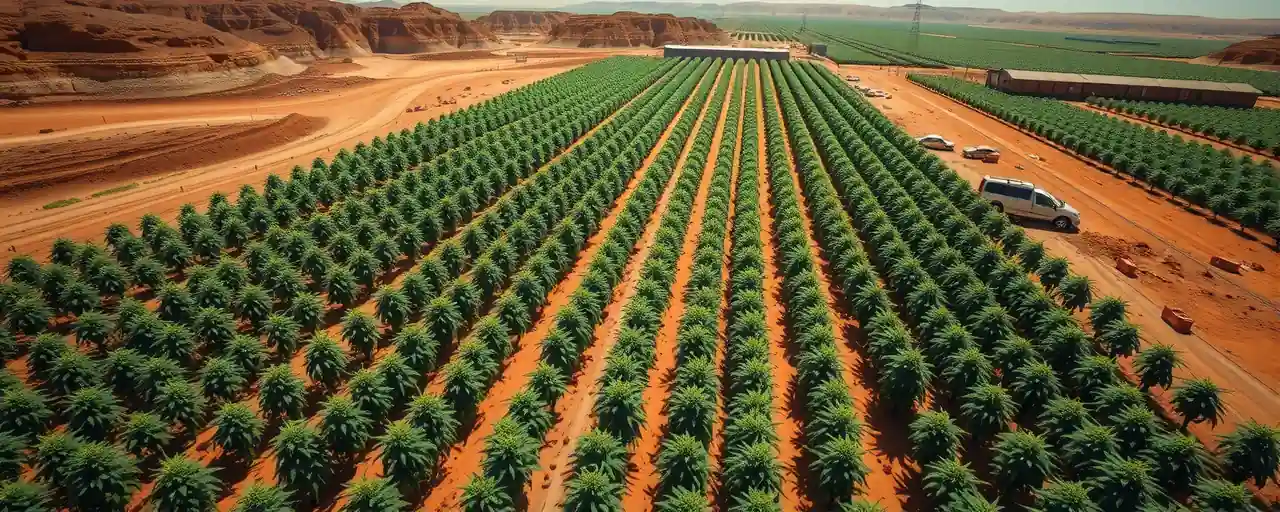A Decisive Blow to Criminal Networks
In a stunning operation, California’s Central Valley became the battleground for a historic crackdown on illegal cannabis. Over 200 officers from 15 agencies swept through Kern, Kings, and Tulare counties, seizing $123.5 million worth of illicit product, including 105,700 plants and 22,057 pounds of processed cannabis. The Unified Cannabis Enforcement Task Force, formed in 2022, led this charge, sending a powerful signal to those who profit by breaking the law.
This raid matters because it defends the rule of law. The black market doesn’t just dodge taxes; it fuels crime, undermines honest businesses, and harms communities. For years, illegal growers have exploited gaps in enforcement, leaving legitimate operators struggling. This operation, the largest yet, proves that unified action can restore fairness and accountability.
California’s legal cannabis market, the largest globally, funds schools, health programs, and environmental efforts through taxes. Illegal operations steal those benefits, burdening taxpayers and businesses alike. Why should we allow criminals to profit while law-abiding entrepreneurs face unfair competition?
The task force confiscated nine firearms and made several arrests, showing that this fight targets dangerous networks, not just plants. The message is unmistakable: break the law, and you’ll face real consequences.
Some claim these raids are excessive, arguing they harm small growers or limit personal choice. That argument falls flat. The real problem is unchecked criminality, not the enforcement protecting our communities and legal markets.
Protecting Our Land and Economy
Illegal cannabis operations devastate more than markets; they ravage California’s environment. The task force found banned pesticides at eight sites, toxins that poison wildlife and pollute water and soil. Studies estimate illicit grows use up to 36.3 million liters of water daily and deploy rodenticides linked to the deaths of 80% of Pacific fishers and endangered spotted owls. With 50,000 illegal grow sites statewide, cleanup costs range from $14,900 to $17,700 per acre.
These grows destroy ecosystems by diverting streams and clearing forests. Taxpayers bear the burden of restoration, not the cartels running these operations. Worse, organized crime groups, including Mexican cartels and Chinese money-laundering networks, drive this trade, linking it to violent crimes like homicides and kidnappings.
Legal cannabis businesses, by contrast, follow strict rules to ensure safe products and fair labor practices. Their taxes support public services. Why tolerate a black market that undermines this system while wrecking our natural resources?
Some argue high taxes and regulations push growers underground. That’s no excuse for lawbreaking. If rules are too strict, reform them—but don’t let criminals exploit the system. Stronger enforcement and practical policies are the solution.
A Proven Strategy for Law Enforcement
The task force’s results speak for themselves: $650 million in seizures, 800,000 plants destroyed, and 190 firearms confiscated since 2022. From the DEA to local sheriffs, this multi-agency effort shows how coordination can dismantle criminal networks. This isn’t just about cannabis; it’s about upholding the law.
Decades of enforcement, from the DEA’s founding in 1973 to Reagan’s task forces in the 1980s, prove that unified strategies work. Today’s task force builds on that foundation, targeting growers, cartels, and money-launderers. In 2024, it seized $534 million in illicit cannabis, protecting communities and legitimate businesses.
Some advocate for decriminalization or lighter penalties, claiming enforcement is too costly. That’s a flawed perspective. Weak penalties, like $500 fines for illegal storefronts, let criminals flourish. What’s the true cost? A black market that endangers lives and erodes public trust.
Building a Stronger Future
This raid is a victory, but the battle continues. The black market persists, driven by high taxes and weak penalties. Policymakers need to simplify regulations to help legal businesses compete while maintaining relentless pressure on illicit networks. Why let cartels thrive while honest operators struggle?
California’s legal cannabis market drives economic growth and funds critical programs. Protecting it demands ongoing enforcement and accountability for lawbreakers. The task force’s success offers a model for other states facing similar challenges.
The path forward is clear. We must prioritize law, fairness, and community safety over criminal profits. This operation proves we can succeed, but only with unwavering commitment. Let’s keep pushing to ensure California’s cannabis market thrives under the rule of law.
